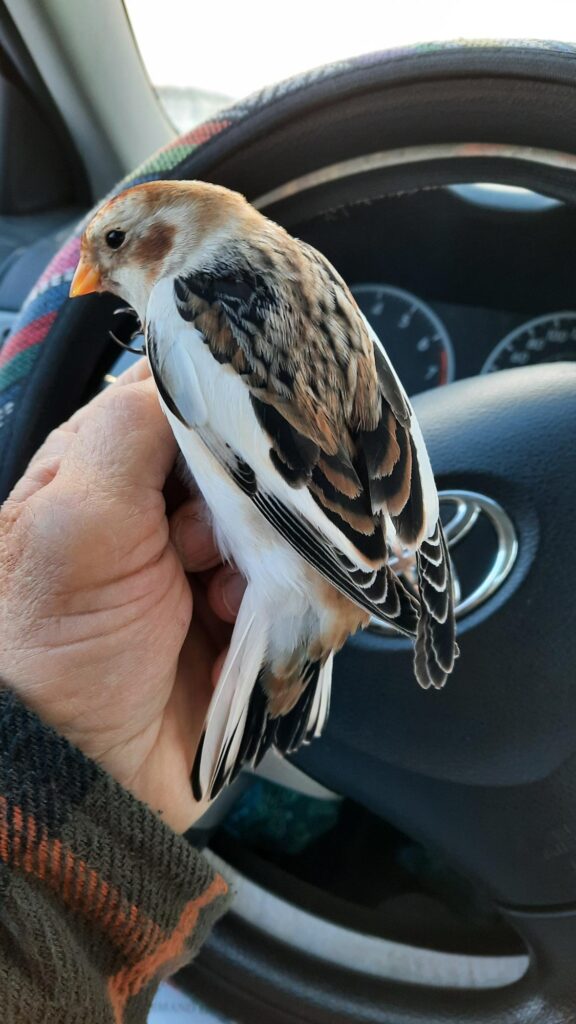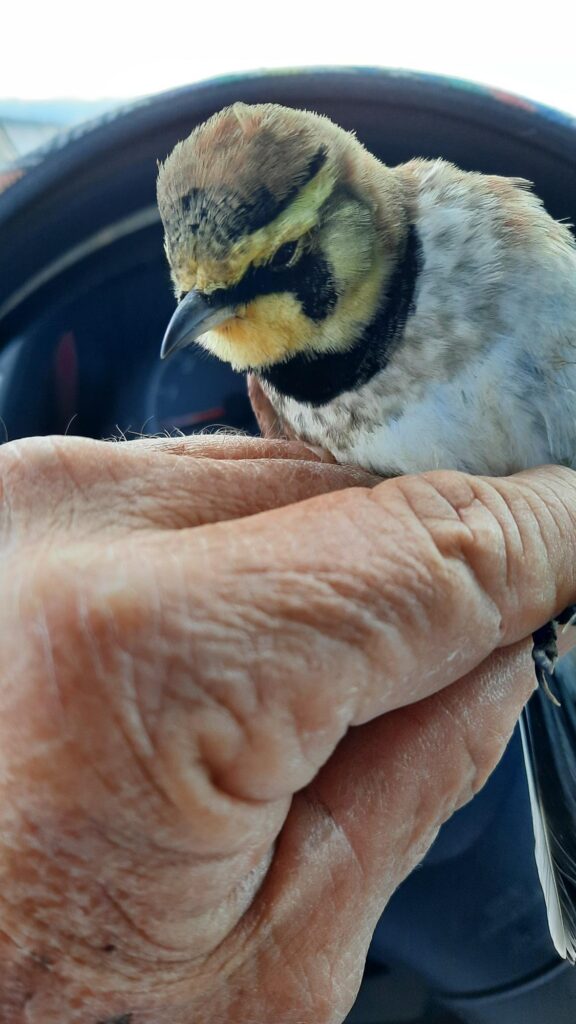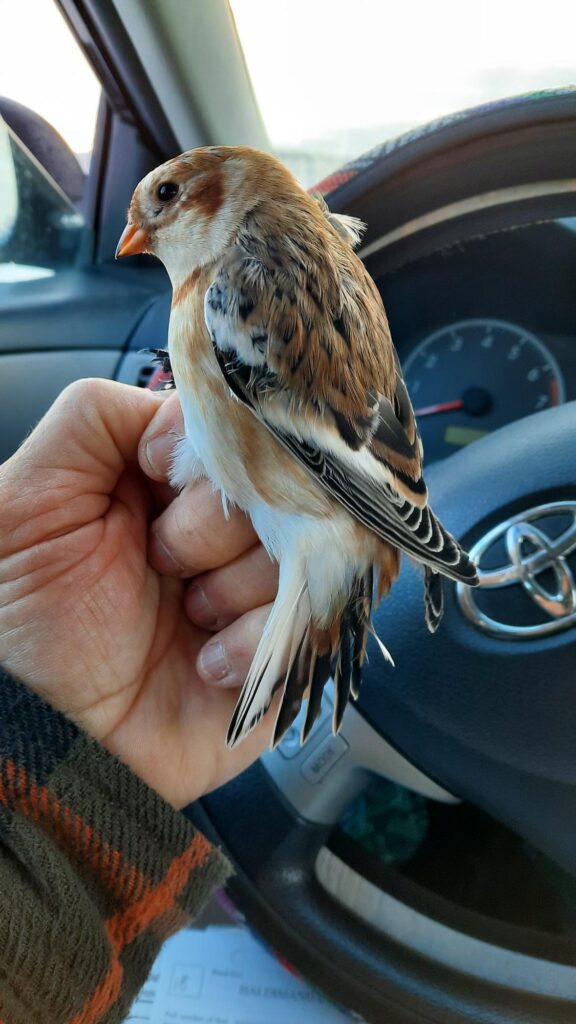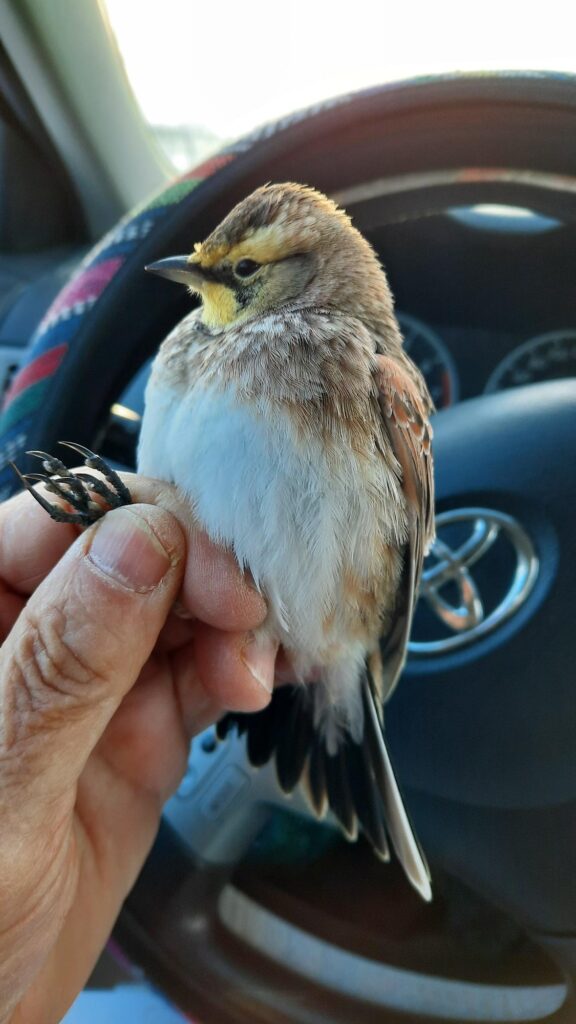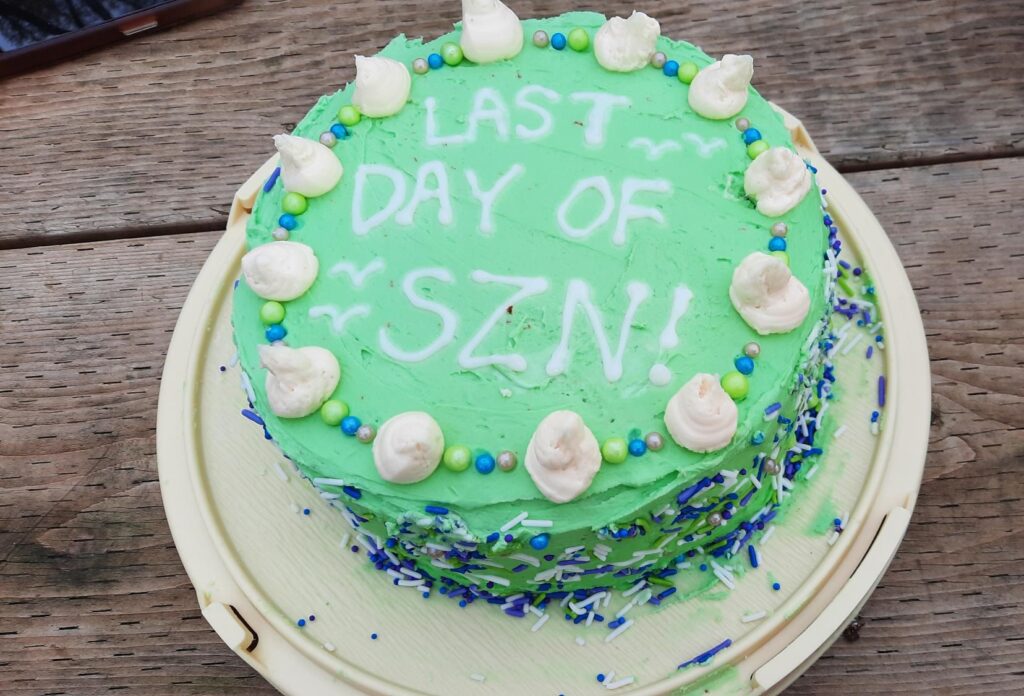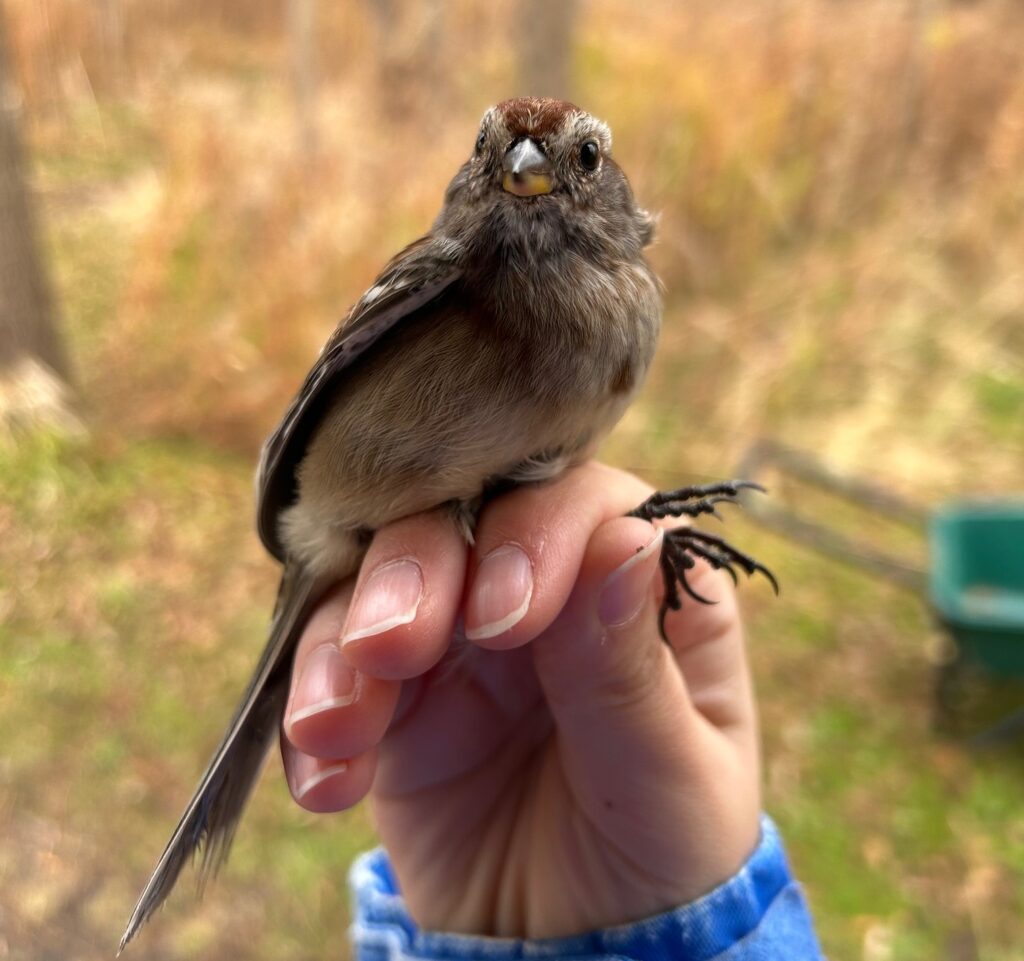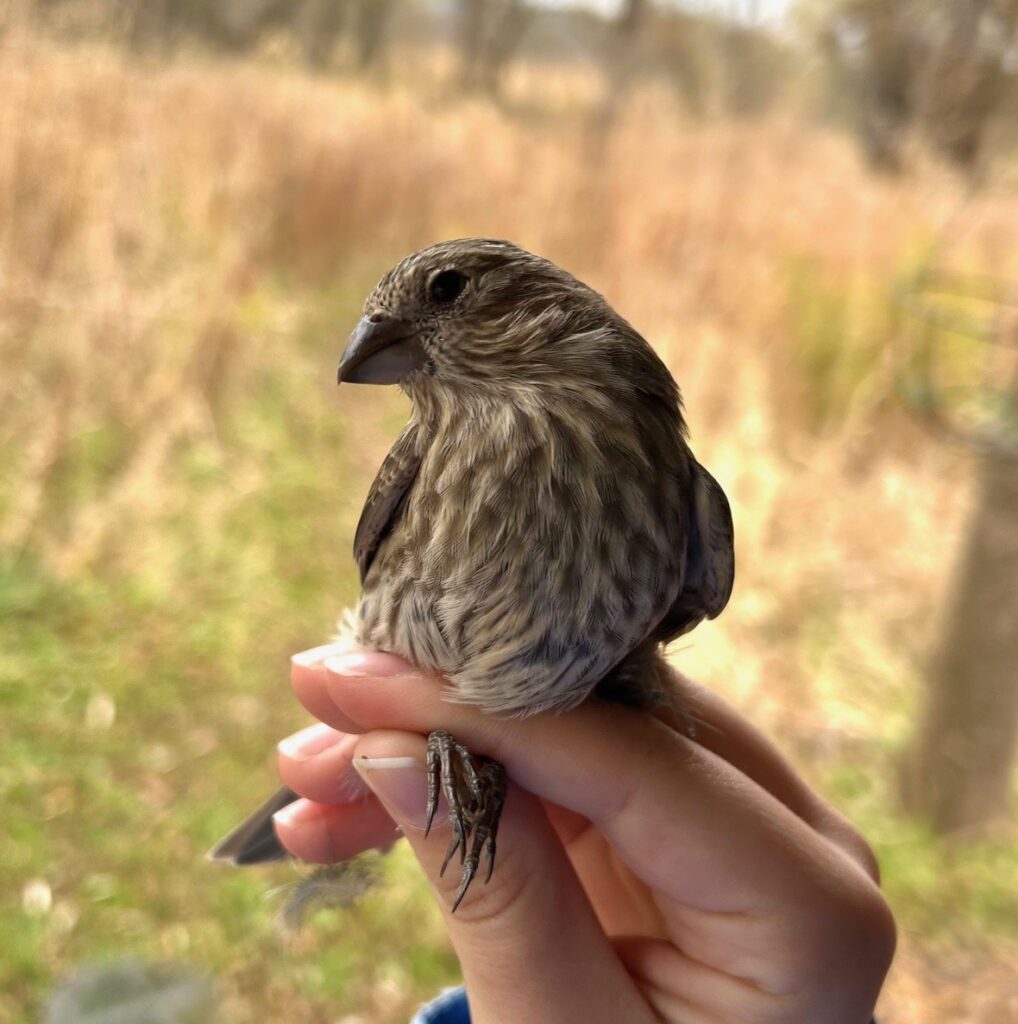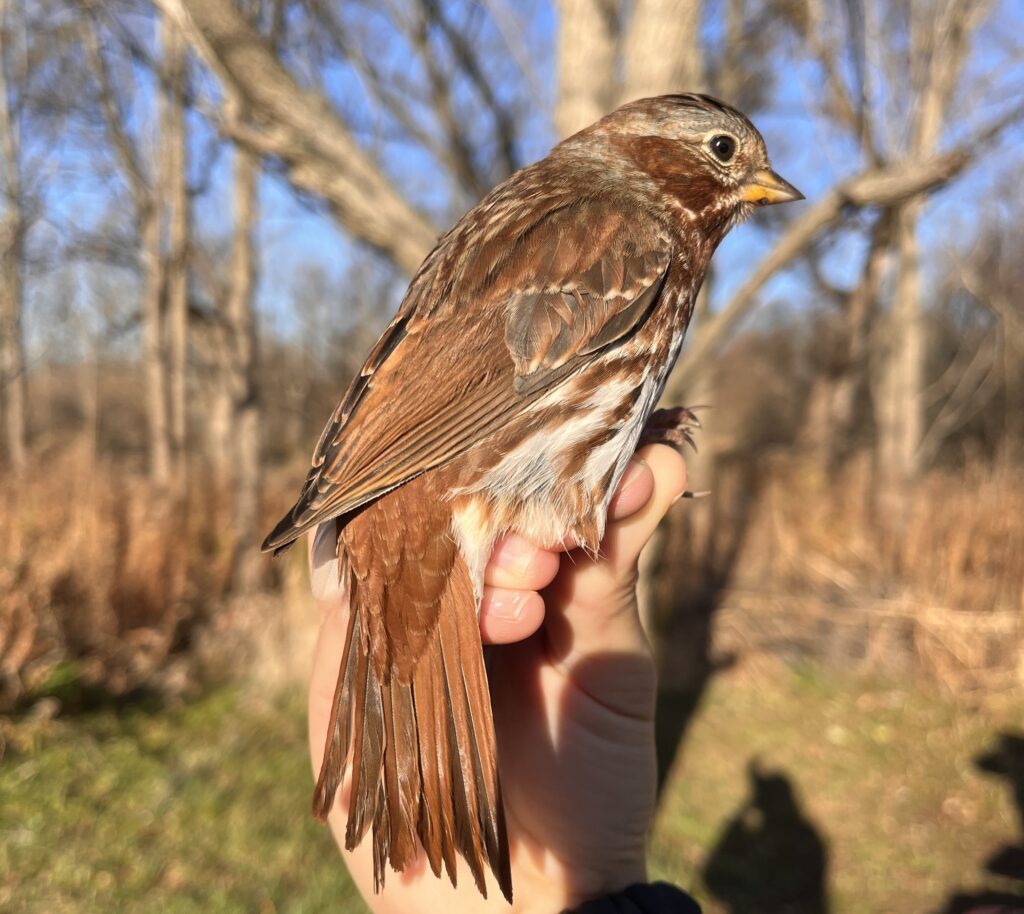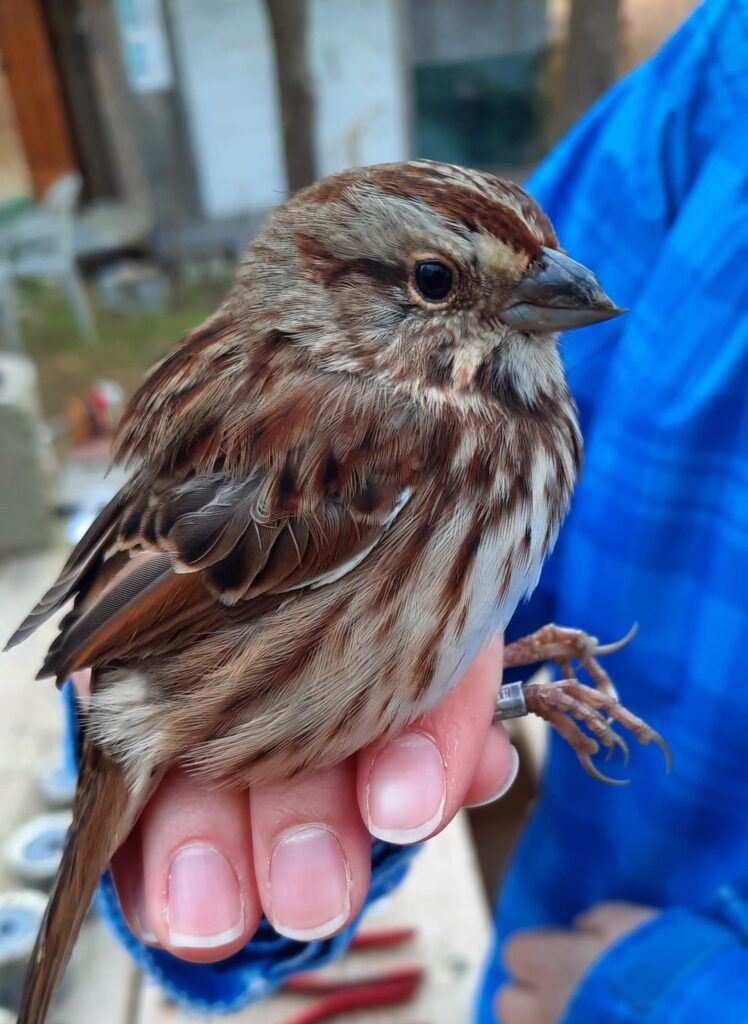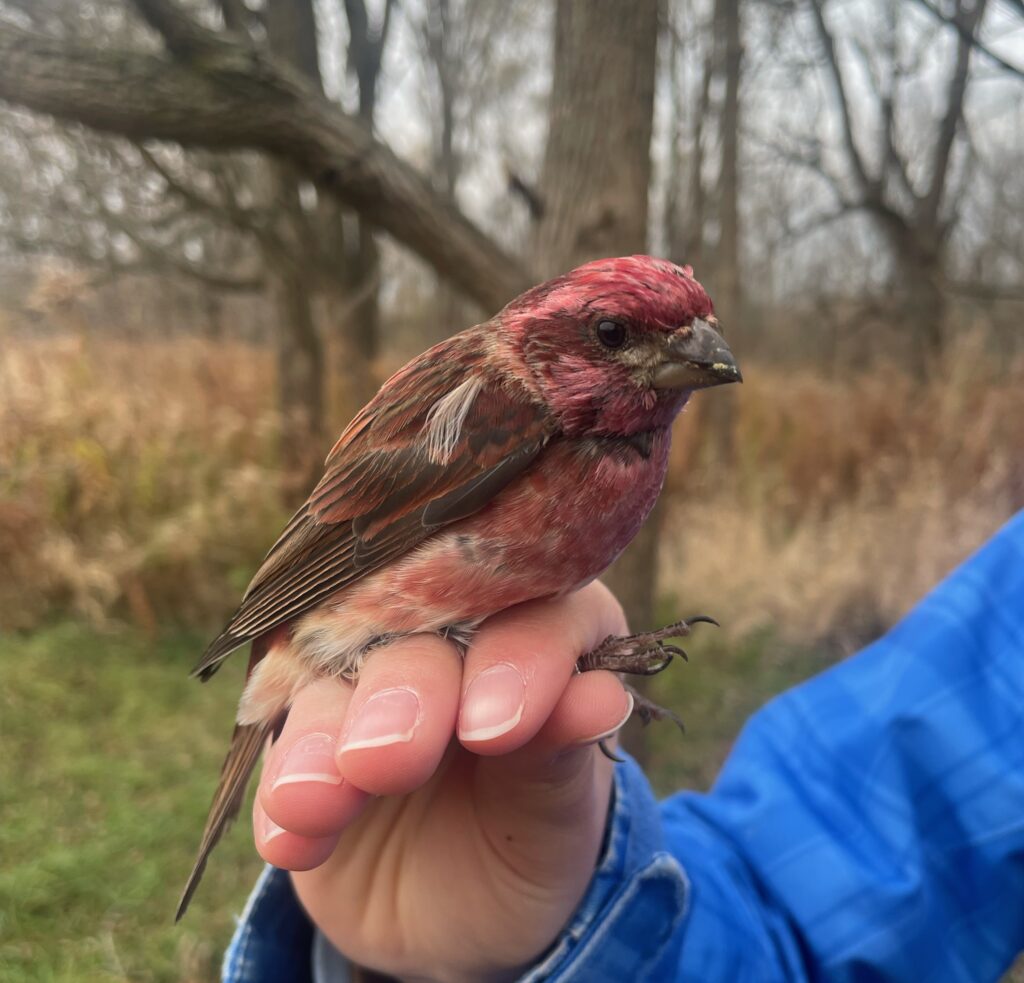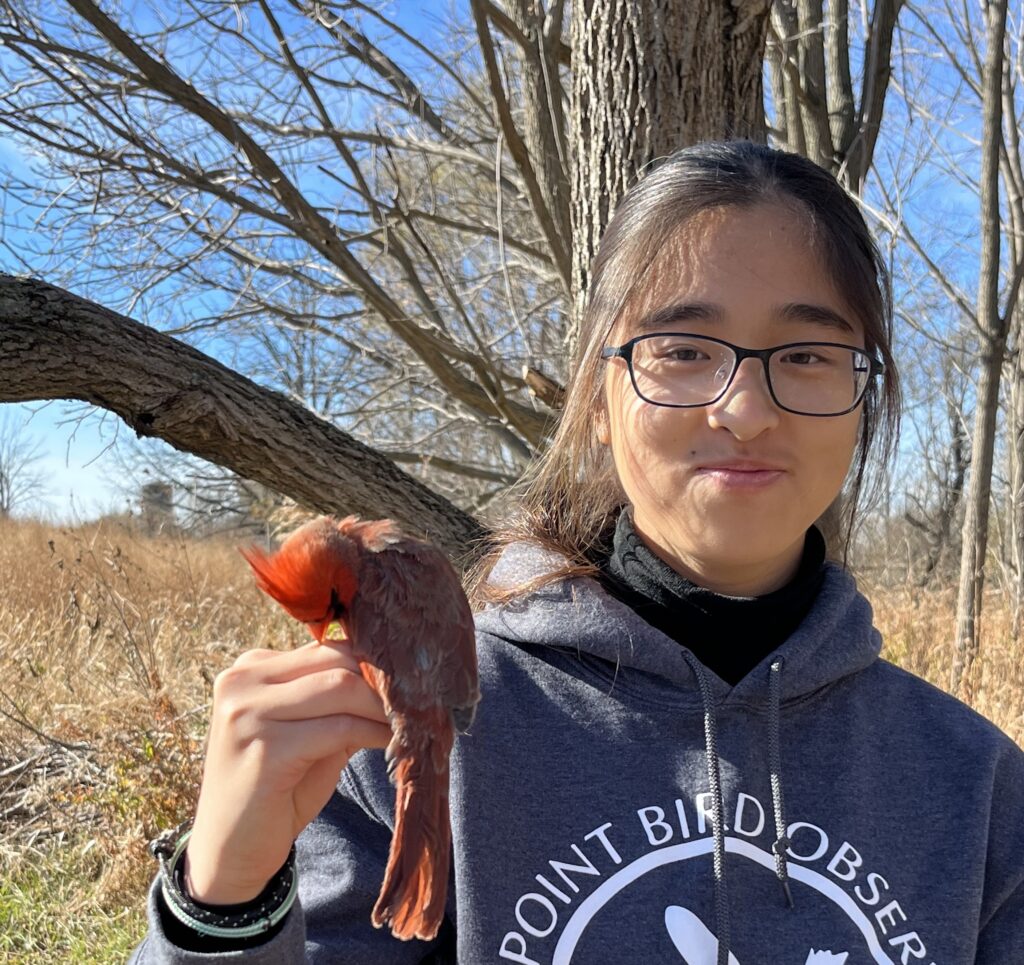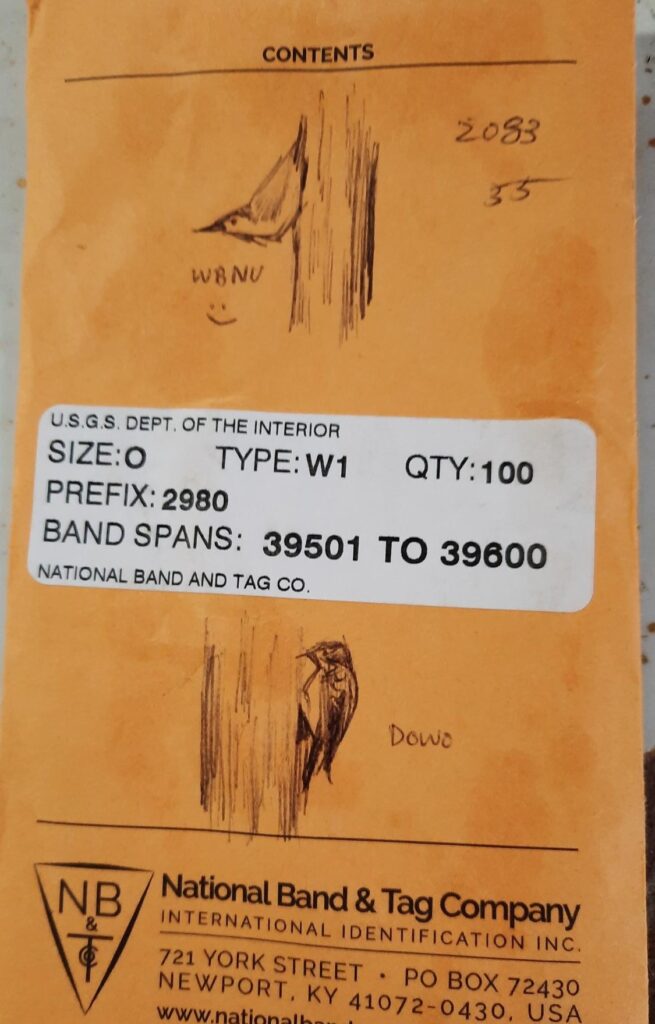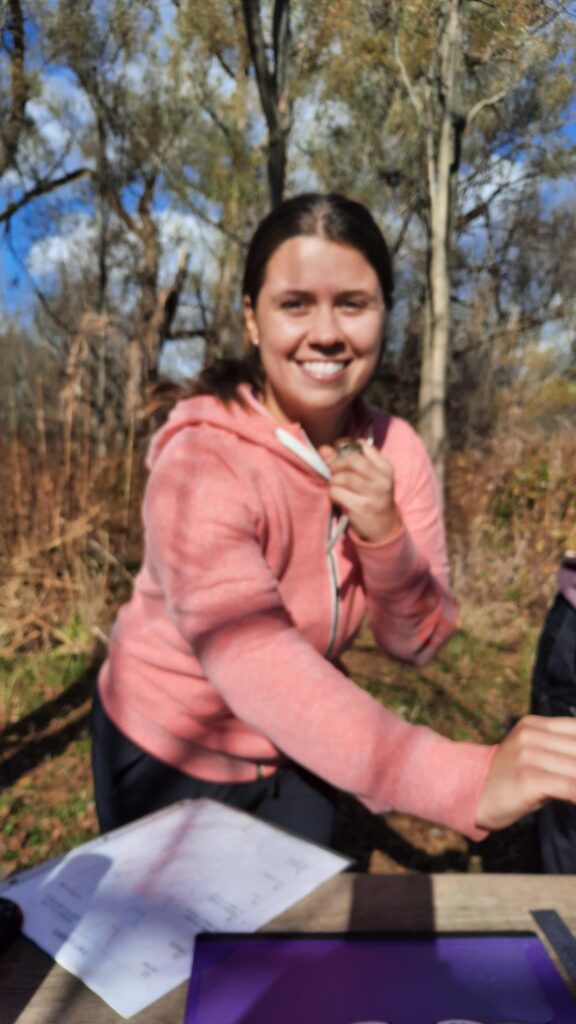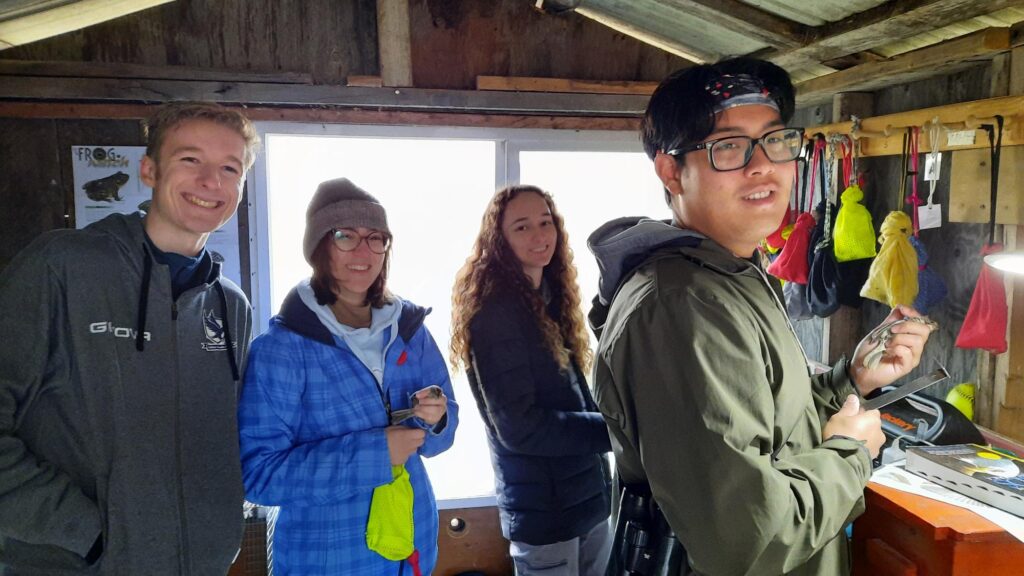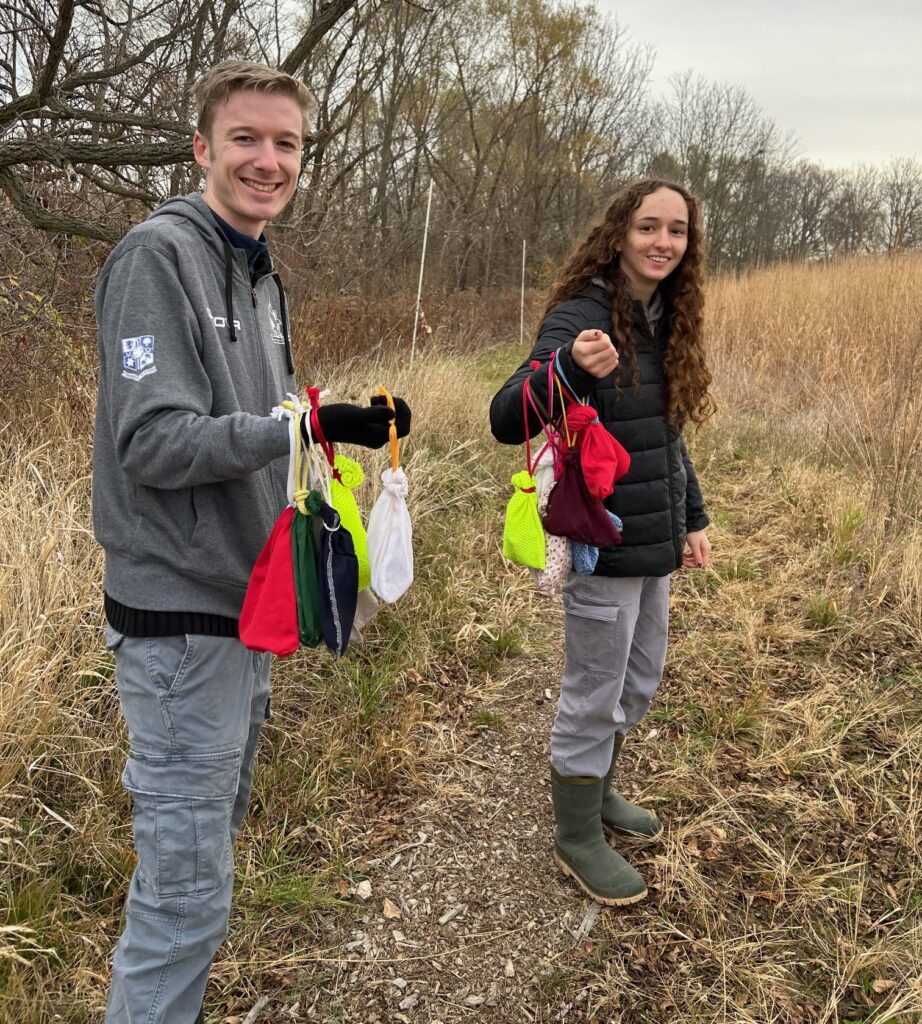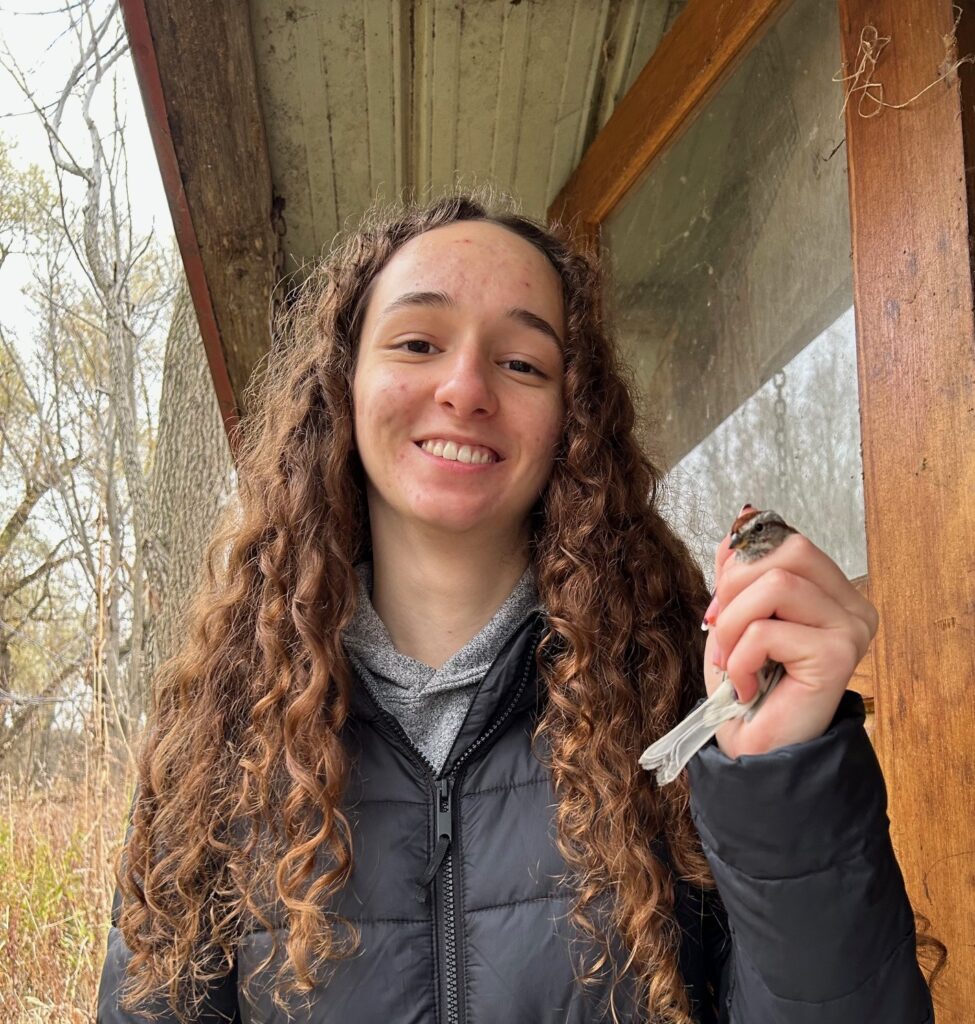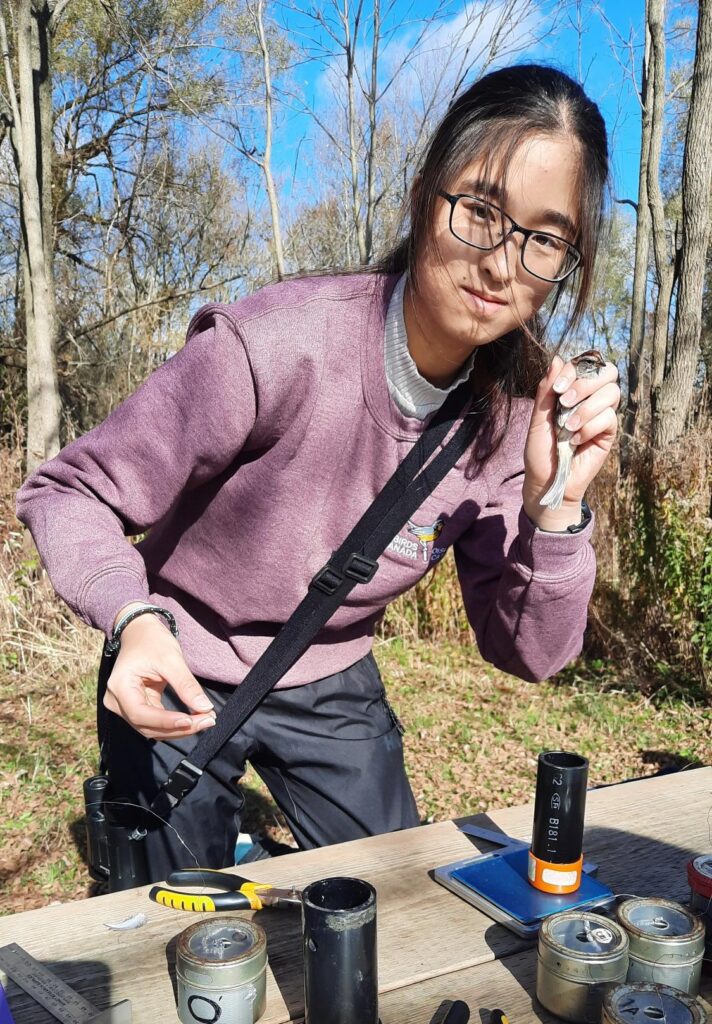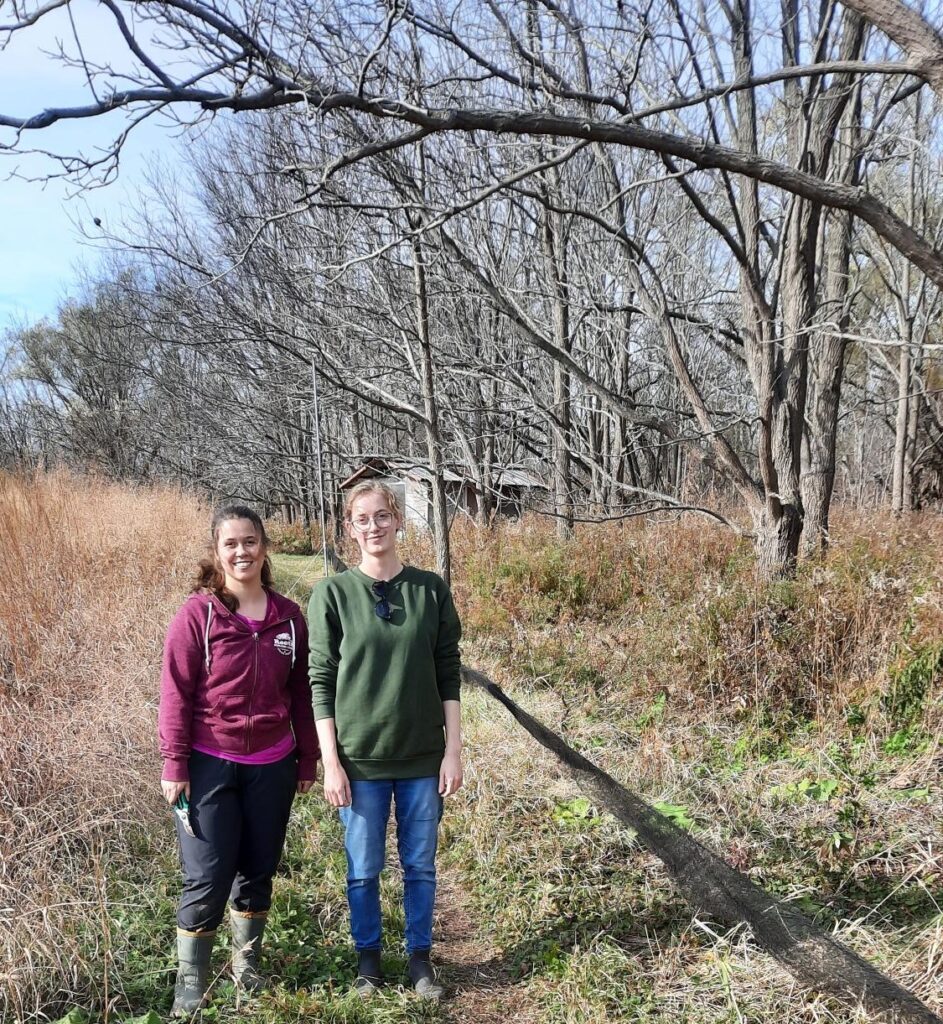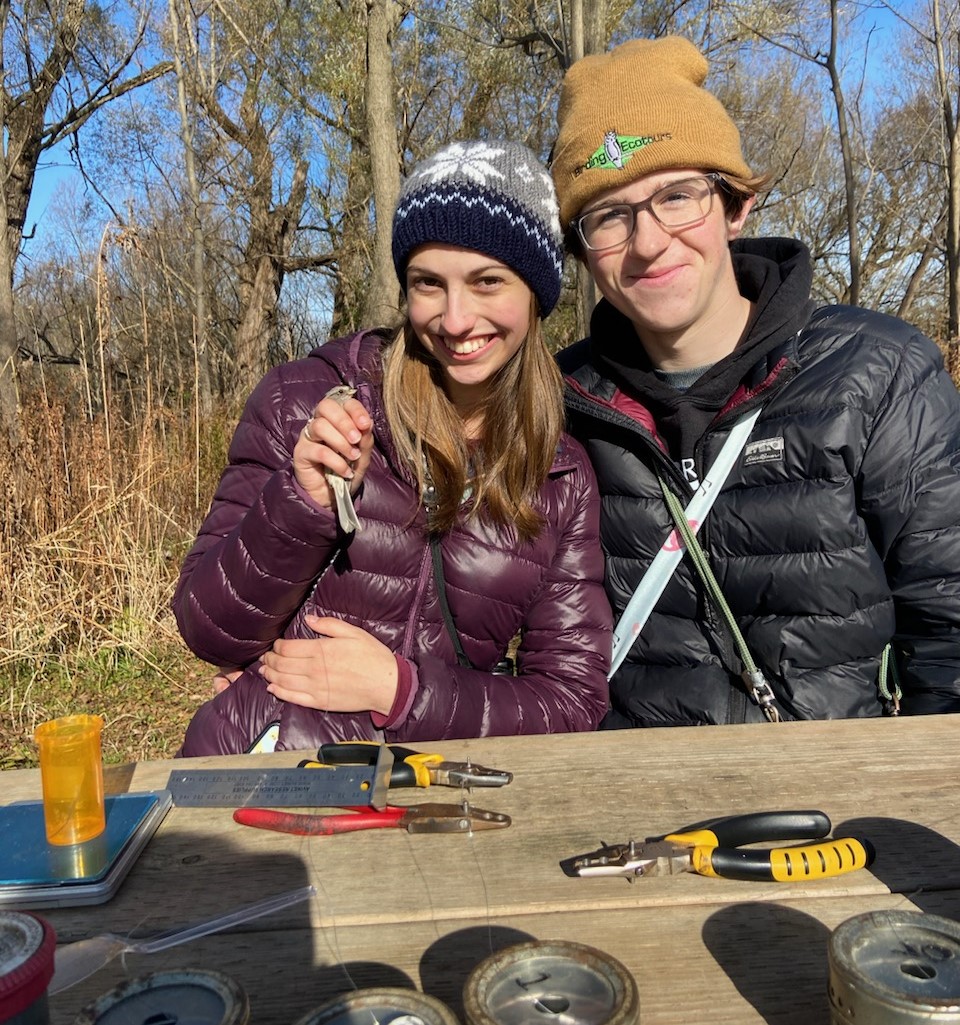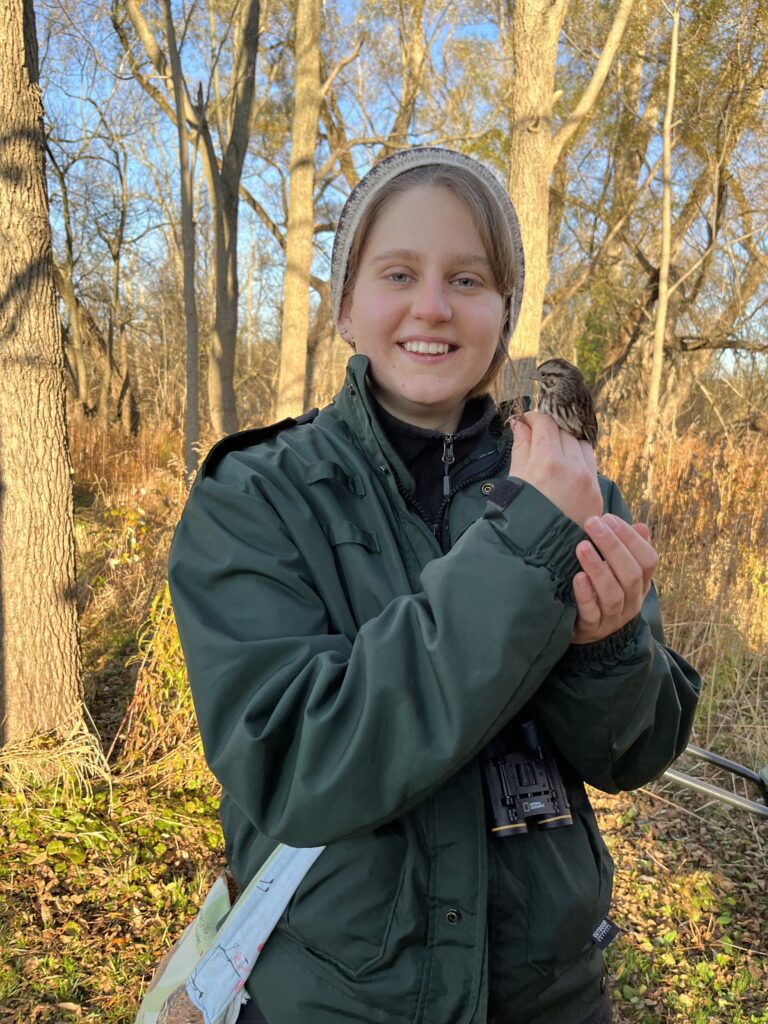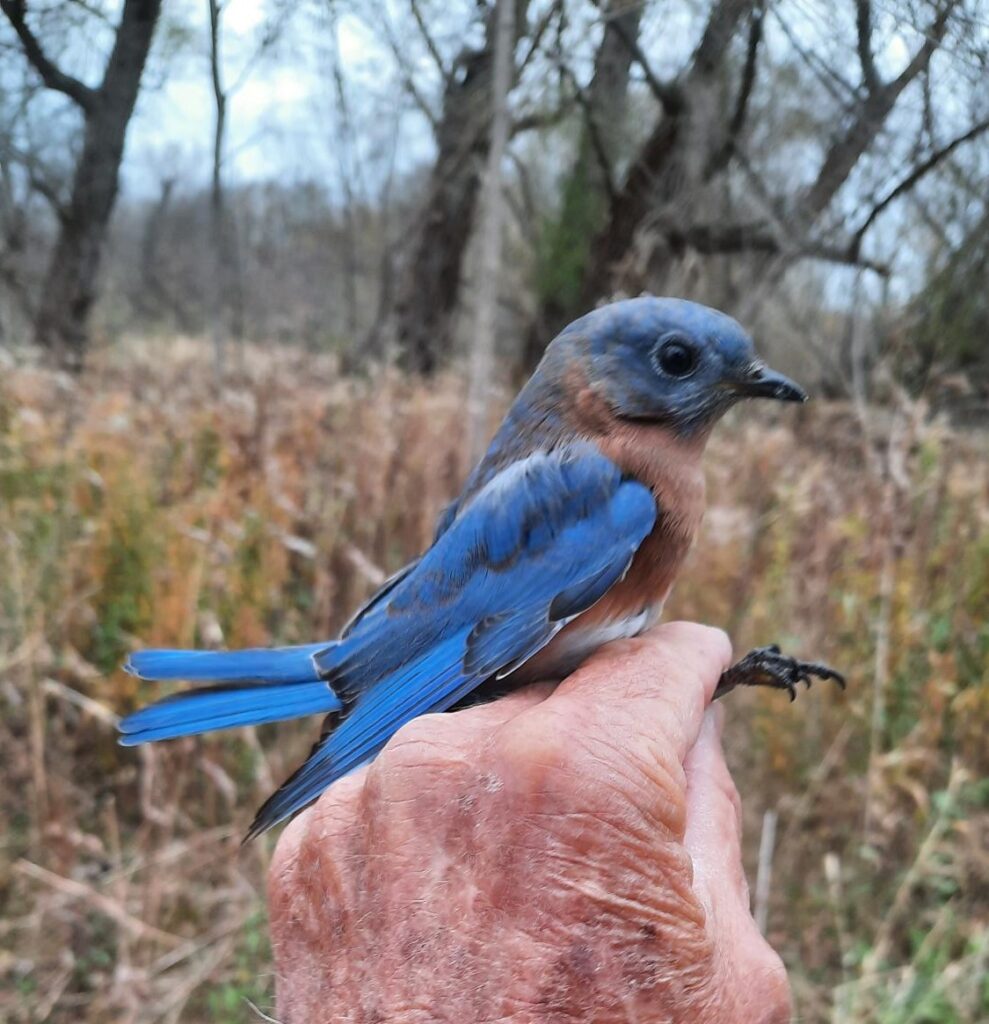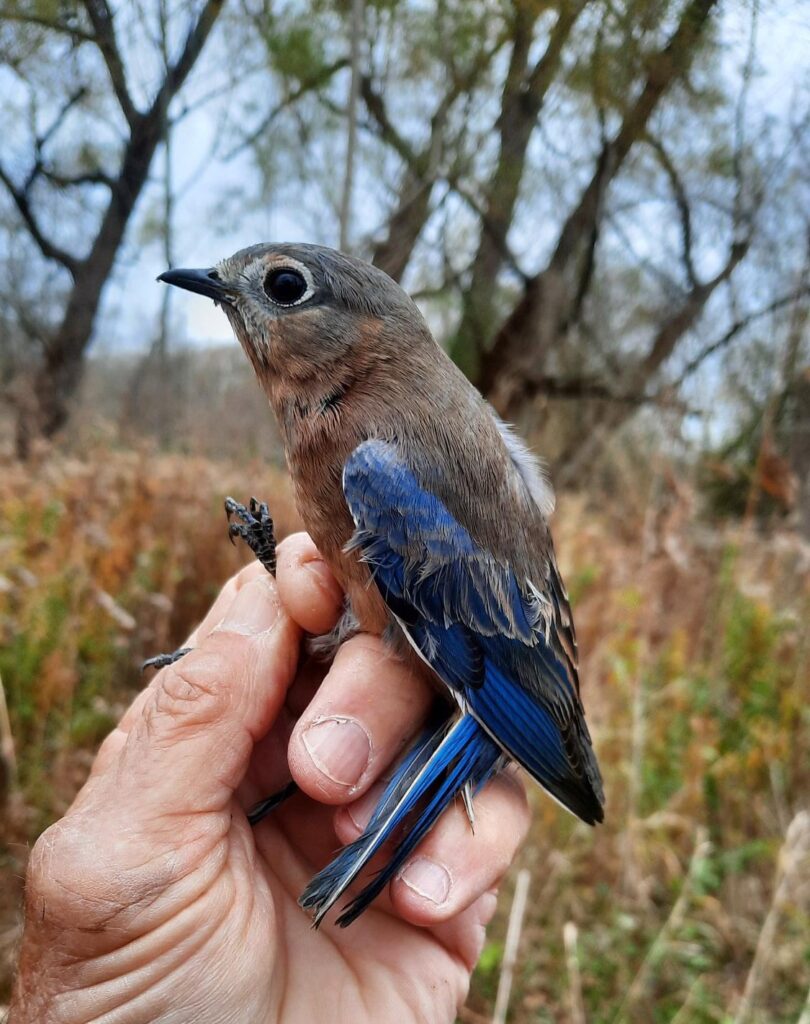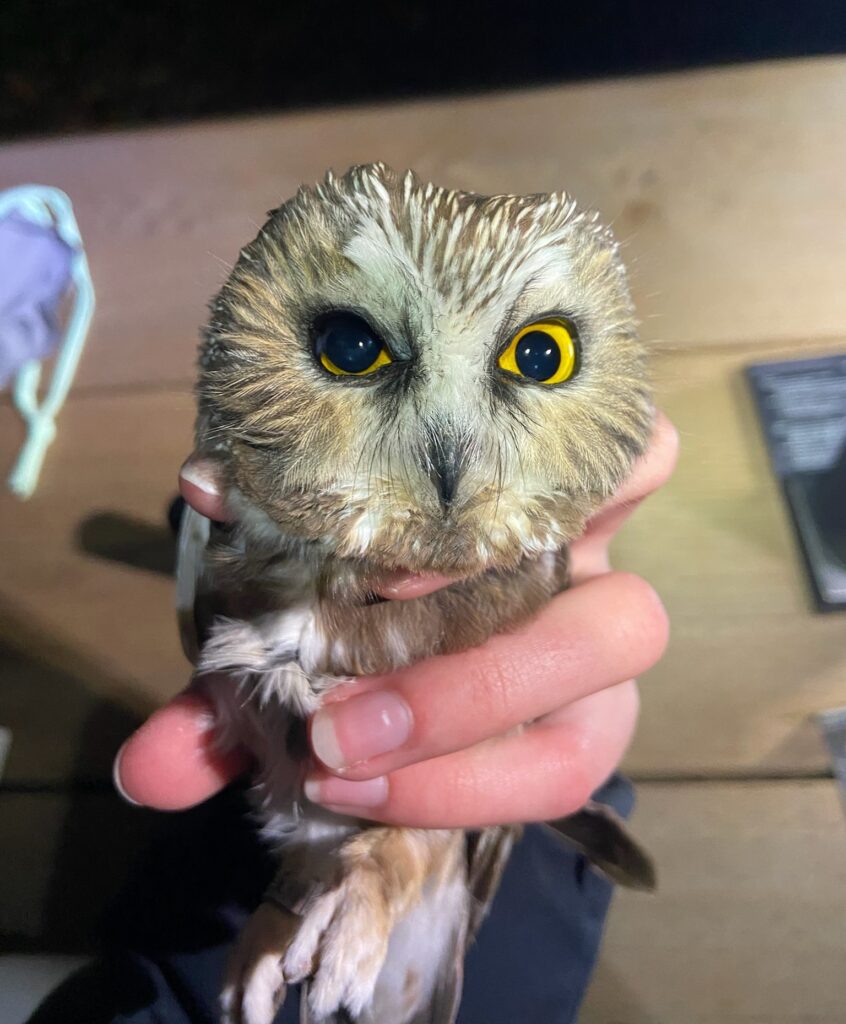The Snow Bunting(/Horned Lark) banding season has gotten off to an unusually early start. Looking back over my records I note that we have caught very few buntings in December and never this early. In 2010 we caught 10 on December 21st; 2013 we had 7 caught over two days – December 26th & 27th; 2016 we had 114 starting December 14th. So getting 13 yesterday was unusual. and then I got another 33 today!
It’s not as unusual to get Horned Larks in December, but so far we’ve banded 31 – a very good start as well. And this morning I also caught one of the two Lapland Longspurs that was hanging around with a small flock of buntings.
It wasn’t a particularly cold night (went down to -3 C.) and there was no new snow to add to the 2 centimeters already on the ground. So I wasn’t expecting much this morning. But they fooled me. It was a little like Grand Central Station with small groups of Snow Buntings or Horned Larks or both dropping in, grabbing a snack and then heading off again. Only to be replaced by another flock. I wondered if these were the same flocks simply cycling through but….I don’t think so. Some groups of buntings contained all females; another had a number of young (HY) males; another brought a couple of longspurs. It’s more difficult to judge what was happening with the larks, especially as the two sexes look so much alike at a distance. But even then, I would get a small group (<8), followed by a large one (>35), and sometimes mixed groups of larks and buntings. I ended up banding 58 birds (33 buntings, 24 larks, 1 longspur) but I would estimate that these represented well less than 25% of the birds that dropped in to the trap area.
I wanted to try an experiment as Dick Stauffer, a Snow Bunting colleague in Alberta, has asked a number of times about what would be the best bait for buntings. I have always used cut/cracked corn. But today I thought I would put it to the test. In one of the traps (the top one in the photo above) I baited with an ordinary millet-based bird seed. There was a definite preference for the cut corn. Only 3 birds (5%) were attracted to the typical bird seed mix. Dick has had a frustratingly hard time out West luring birds to his traps. Maybe they don’t like cut corn….
Rick



